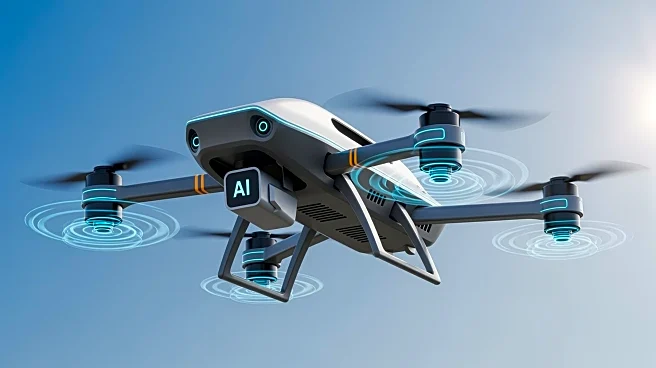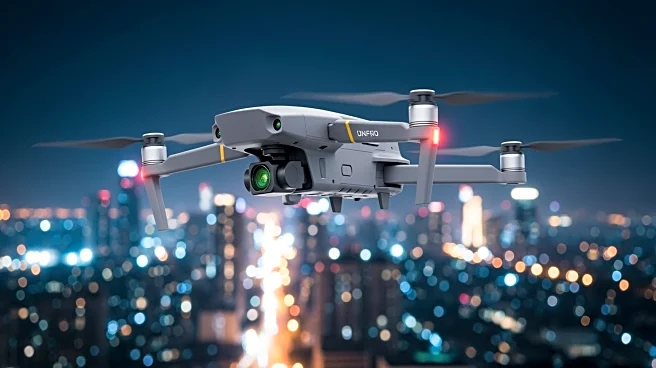What's Happening?
ZeroEyes, a Pennsylvania-based company known for its gun detection technology, has launched a new product aimed at enhancing public safety through advanced drone technology. The ZeroEyes Aerial Detection
Kits (ZAD) are designed to provide law enforcement agencies with a portable, drone-based AI threat detection and situational awareness solution. The ZAD software offers a live camera feed capable of identifying firearms, vehicles, boats, other drones, and people. This technology is particularly targeted at securing outdoor spaces, which are challenging to protect due to their open nature and vulnerability to unauthorized access and potential gun-related violence. The company asserts that this new solution can assist police in managing event and perimeter security, armed suspect situations, searches, barricaded individuals, hostage scenarios, and domestic disputes.
Why It's Important?
The introduction of drone-based AI threat detection by ZeroEyes represents a significant advancement in public safety technology. By providing real-time threat detection and verified alerts, this technology enhances the ability of law enforcement agencies to respond swiftly and effectively to potential threats. This development is crucial in the context of increasing concerns about public safety and the need for innovative solutions to address complex security challenges. The use of drones equipped with AI capabilities can potentially reduce response times and improve situational awareness, thereby increasing the safety of both law enforcement personnel and the public. Additionally, this technology could lead to broader adoption of AI-driven solutions in public safety, influencing future policy and investment in security infrastructure.
What's Next?
As ZeroEyes rolls out its new drone-based threat detection system, law enforcement agencies may begin integrating this technology into their operations. The effectiveness and reliability of the ZAD system in real-world scenarios will likely be closely monitored, potentially influencing its adoption across various jurisdictions. Stakeholders, including public safety officials and policymakers, may evaluate the impact of this technology on crime prevention and response strategies. Furthermore, the success of this initiative could encourage other companies to develop similar AI-driven security solutions, fostering innovation and competition in the public safety technology sector.
Beyond the Headlines
The deployment of AI-driven drones in law enforcement raises important ethical and legal considerations. Issues such as privacy, data security, and the potential for misuse of surveillance technology must be addressed to ensure that the benefits of this innovation are realized without infringing on civil liberties. Policymakers and legal experts may need to establish guidelines and regulations to govern the use of such technology, balancing the need for security with the protection of individual rights.












